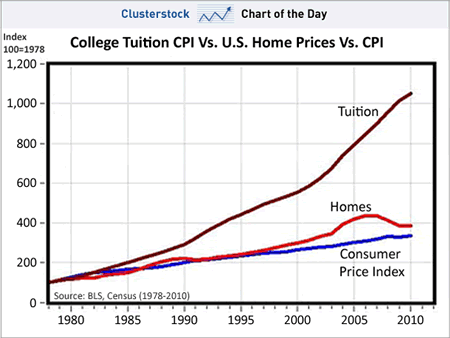
This chart from Clusterstock (via Carpe Diem) shows the cost of college tuition comparison to historical housing prices and the Consumer Price Index (CPI) over the same period. The CPI is designed to track our cost of living by estimating the average price of consumer goods and services purchased by households. Everything was normalized to 100 starting in 1978.
While housing went up 4x at its peak (~400), college tuition has gone up over 10x. Instapundit Glenn Reynolds says the higher education bubble is about to burst:
It’s a story of an industry that may sound familiar. The buyers think what they’re buying will appreciate in value, making them rich in the future. The product grows more and more elaborate, and more and more expensive, but the expense is offset by cheap credit provided by sellers eager to encourage buyers to buy.
Buyers see that everyone else is taking on mounds of debt, and so are more comfortable when they do so themselves; besides, for a generation, the value of what they’re buying has gone up steadily. What could go wrong? Everything continues smoothly until, at some point, it doesn’t.
Yes, this sounds like the housing bubble, but I’m afraid it’s also sounding a lot like a still-inflating higher education bubble. And despite (or because of) the fact that my day job involves higher education, I think it’s better for us to face up to what’s going on before the bubble bursts messily.
The college tuition prices being tracked in the chart was done by the CPI for US cities for “College Tuition and Fees”. According to this BLS.gov link, this tracks actual expenditures by households, and not some measure of median college tuition, which is often just the “retail price” before various forms of financial aid and/or scholarships.
Another hot topic is the rapidly rising cost of health care. Well, college tuition CPI beats that too, from this Wikipedia chart:
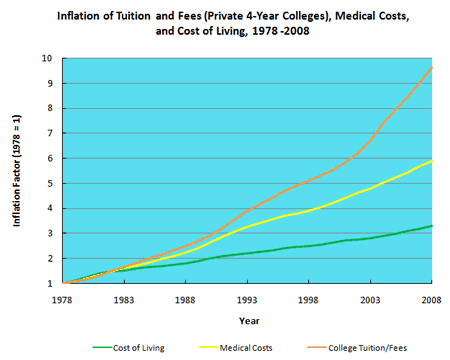
I know that I’m scared to imagine what college will cost in another 20 years. Dealing with this issue will be tricky, with huge amounts of easy government credit being given to 18-year-olds that are being told by everyone (including parents) that it is totally worth it. For many people, it will indeed be worth it. For others, not so much.
In my humble opinion, it also seems obvious that this trend can’t survive forever. But will it burst like a bubble? Perhaps if the government turns off the loans suddenly, but that seems unlikely. I like Reynold’s idea that there may be an educational revolution with the internet, online coursework, and changing educational standards.
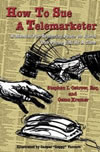


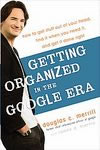 I ran across
I ran across 
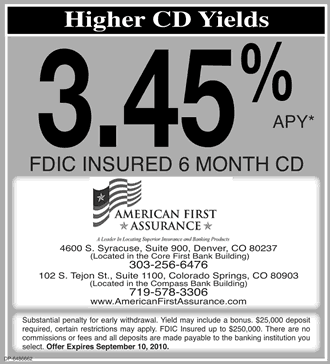


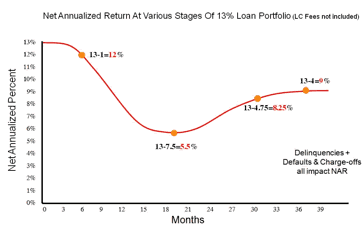
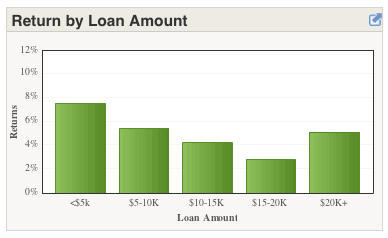
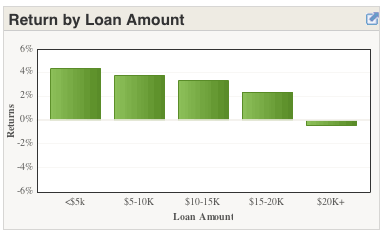
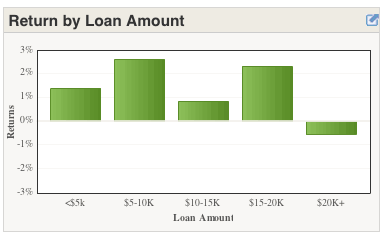
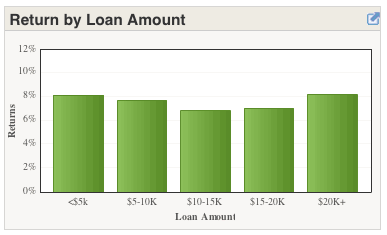
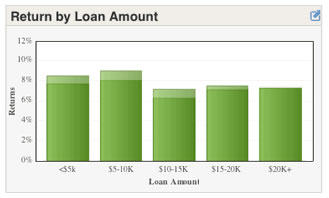
 or
or  ratings, just ignore it.
ratings, just ignore it. 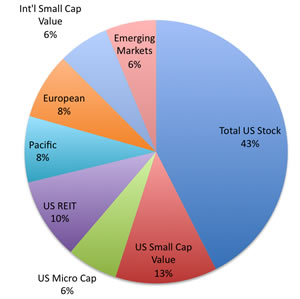
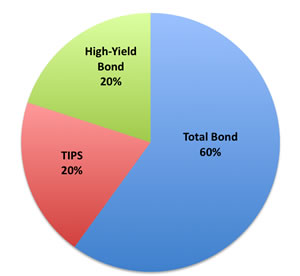
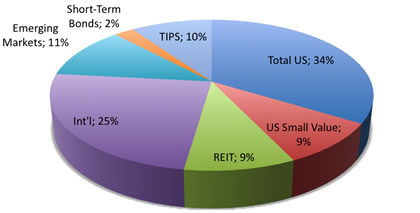
 The Best Credit Card Bonus Offers – March 2024
The Best Credit Card Bonus Offers – March 2024 Big List of Free Stocks from Brokerage Apps
Big List of Free Stocks from Brokerage Apps Best Interest Rates on Cash - March 2024
Best Interest Rates on Cash - March 2024 Free Credit Scores x 3 + Free Credit Monitoring
Free Credit Scores x 3 + Free Credit Monitoring Best No Fee 0% APR Balance Transfer Offers
Best No Fee 0% APR Balance Transfer Offers Little-Known Cellular Data Plans That Can Save Big Money
Little-Known Cellular Data Plans That Can Save Big Money How To Haggle Your Cable or Direct TV Bill
How To Haggle Your Cable or Direct TV Bill Big List of Free Consumer Data Reports (Credit, Rent, Work)
Big List of Free Consumer Data Reports (Credit, Rent, Work)